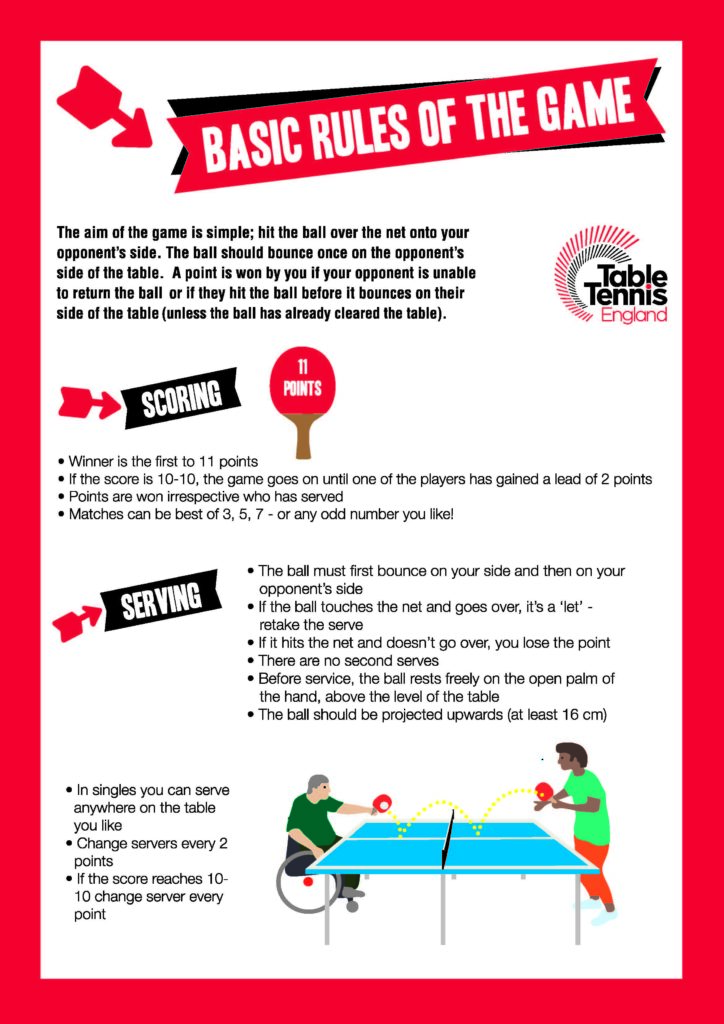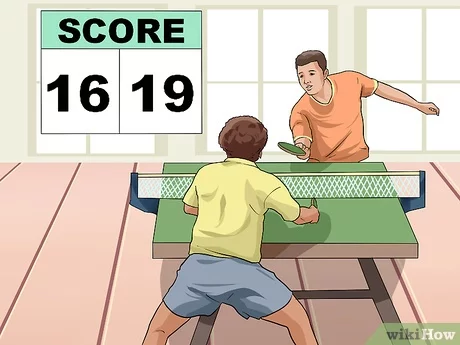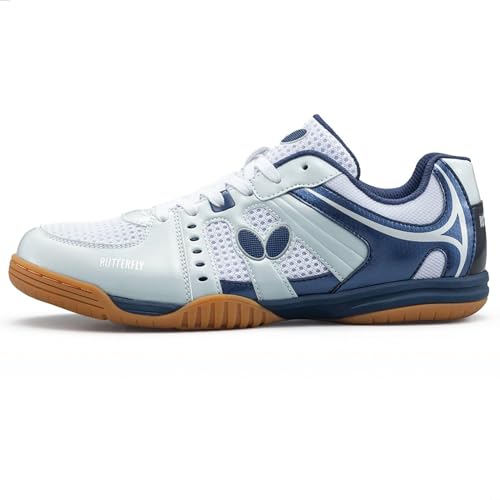Scoring in ping pong is simple but requires understanding the rules. You score points by making your opponent miss or hit the ball out of play.
Ping pong, also known as table tennis, is a fast-paced game enjoyed worldwide. Knowing how to score is key to enjoying and succeeding in this sport. Each point can be won with skill and strategy, making every game exciting. Whether you’re a beginner or looking to refine your skills, understanding the scoring system will improve your play.
This guide will explain how to score in ping pong, ensuring you can keep track of the game and enjoy it to the fullest. Get ready to learn the basics and become a better player!
Basic Rules
Ping pong, also known as table tennis, is a fun and fast-paced game. Knowing the basic rules is crucial to playing effectively and scoring points. These rules help ensure fair play and make the game enjoyable for all participants. Below, we will break down some of the essential rules to follow.
Service Rules
The serve is a key part of the game. A good serve can give you an advantage. Here are the basic service rules you need to know:
- The ball must rest on an open palm.
- Throw the ball up at least 6 inches before hitting it.
- Hit the ball so it bounces on your side first.
- Then, it must bounce on your opponent’s side.
- If the serve touches the net but still lands correctly, it’s a “let” serve. Serve again.
Scoring System
Understanding the scoring system is essential to keeping track of the game. Here’s how the points are scored:
- A match is played best out of any odd number of games (usually 5 or 7).
- The first player to reach 11 points wins a game.
- You must win by at least 2 points. If the score is 10-10, play continues until one player leads by 2 points.
- Points are scored when your opponent fails to return the ball.
- Points are also scored if the opponent hits the ball off the table.
Here’s a quick look at how a typical game might proceed:
| Player A | Player B |
|---|---|
| 11 | 9 |
| 8 | 11 |
| 11 | 7 |
In this example, Player A wins the match by winning two out of three games.

Credit: www.tabletennisengland.co.uk
Essential Equipment
To excel in ping pong, having the right equipment is crucial. The right paddle and balls can significantly impact your performance. Let’s dive into the essential gear you need.
Choosing Paddles
Your paddle choice can make a big difference. A good paddle has a comfortable grip. Look for a blade with the right balance of speed and control. Beginners often prefer a paddle with more control. Advanced players may choose a paddle with higher speed.
The rubber on the paddle also matters. Smooth rubber offers more spin. Paddles with pimpled rubber provide better control. Choose the rubber based on your play style.
Selecting Balls
Ping pong balls come in various qualities. Three-star balls are the best quality. They are more durable and provide consistent bounce. One and two-star balls are cheaper but less reliable.
Choose balls that are round and have a good bounce. Consistent ball quality ensures fair play. Keep a few extra balls handy during a match. This way, you are always ready to play.
Grip Techniques
Choosing the right grip is crucial for improving your ping pong game. Different grip techniques can influence your control, power, and spin. In this section, we will explore two popular grip methods: the Shakehand grip and the Penhold grip.
Shakehand Grip
The Shakehand grip is widely used by players around the world. It is similar to shaking hands with someone. This grip provides a good balance between forehand and backhand shots.
Here is how to hold the Shakehand grip:
- Hold the paddle as if you are shaking someone’s hand.
- Wrap your fingers around the handle.
- Keep your thumb near the bottom edge of the blade.
- Ensure your index finger rests comfortably on the other side of the blade.
This grip offers stability and comfort. It is great for both beginners and advanced players.
Penhold Grip
The Penhold grip is popular among Asian players. It resembles holding a pen. This grip offers excellent wrist flexibility and is ideal for quick attacks.
Here is how to hold the Penhold grip:
- Hold the paddle with the blade facing up.
- Place your thumb and index finger on either side of the handle.
- Wrap the remaining fingers around the back of the blade.
This grip allows for strong forehand strokes. It can be challenging for backhand shots, but with practice, it becomes easier.
Both grip techniques have their pros and cons. It is essential to choose the one that feels most comfortable for you. Practice regularly to improve your grip and enhance your ping pong skills.

Credit: www.wikihow.com
Footwork Fundamentals
Footwork is crucial in ping pong. Good footwork helps you reach the ball quickly and maintain balance. It also allows you to execute shots with precision. In this section, we will cover the basics of footwork in ping pong. You will learn the correct stance and movement drills to improve your game.
Basic Stance
Your stance is the foundation of good footwork. Stand with your feet shoulder-width apart. Bend your knees slightly. Keep your weight on the balls of your feet. This allows quick movements. Your body should be relaxed but ready to move. Hold your paddle in front of you. Keep your eyes on the ball. This stance helps you react quickly to your opponent’s shots.
Movement Drills
Practicing movement drills helps you develop better footwork. One simple drill is the side-to-side shuffle. Stand in your basic stance. Move to your right by shuffling your feet. Then, shuffle back to your left. Repeat this movement several times. This drill improves your lateral movement.
Another effective drill is the forward and backward shuffle. Start in your basic stance. Shuffle forward a few steps. Then, shuffle backward to your starting position. Repeat this drill multiple times. It helps you get closer to the table or retreat quickly.
Combine these drills for a complete workout. Start with the side-to-side shuffle. Then, switch to the forward and backward shuffle. This combination enhances your overall footwork. Practicing these drills regularly will make you a better ping pong player.
Serving Strategies
Serving in ping pong is a critical skill. A good serve can set up a winning shot. There are different serving strategies to consider. By varying your serves, you can keep your opponent guessing. Let’s explore two effective serving techniques: spin serves and placement serves.
Spin Serves
Spin serves add a twist to the ball’s trajectory. They make the ball hard to predict. To execute a spin serve, brush the ball with your racket. The key is the angle of your racket. Use your wrist to generate more spin. This type of serve can confuse your opponent. They might misjudge the ball’s path.
Placement Serves
Placement serves focus on where the ball lands. Aim for the corners or edges of the table. This makes it tough for your opponent to return. Varying the placement keeps your opponent off balance. Practice serving to different spots. This will improve your accuracy. A well-placed serve can win you points.
Hitting Techniques
Mastering hitting techniques in ping pong can significantly improve your game. These techniques help you control the ball and score points. Understanding the basics is essential for every player.
Forehand Topspin
The forehand topspin is an effective shot in ping pong. To execute it, start with your paddle below the ball. Swing your paddle upward and forward. Make contact with the ball at the paddle’s top edge. This creates a spinning motion. A good topspin will make the ball dip quickly over the net. It can confuse your opponent and force errors.
Backhand Drive
The backhand drive is another useful hitting technique. Hold your paddle with a firm grip. Position your paddle behind the ball. Swing your paddle forward and slightly upward. Aim for a flat contact with the ball. This shot is quick and powerful. It can catch your opponent off guard. Practice this shot to increase accuracy and speed.
Defensive Plays
In ping pong, defensive plays are crucial for maintaining control during a match. They help in responding to aggressive shots from your opponent. Using effective defensive techniques can turn the game in your favor. Below, we explore two essential defensive strategies: block shots and chop shots.
Block Shots
Block shots are a fundamental defensive technique. They are used to counter fast and aggressive attacks. Here’s how to execute a block shot:
- Position yourself close to the table.
- Hold your paddle slightly closed.
- Use a short, controlled stroke.
- Keep your wrist firm and stable.
Block shots are effective against topspin attacks. They help in returning the ball with minimal effort. The key is to use your opponent’s power against them. This technique relies on timing and precision. Practice regularly to perfect your block shot.
Chop Shots
Chop shots are another essential defensive strategy. They are used to return the ball with backspin. Here’s how to perform a chop shot:
- Stand a few feet back from the table.
- Hold your paddle at a slight angle.
- Use a downward slicing motion.
- Apply backspin to the ball.
Chop shots are effective against topspin and loop shots. They slow down the game and force your opponent to lift the ball. This can lead to errors from your opponent. Consistent practice will improve your chop shot accuracy.
Both block and chop shots are vital for a solid defense. They help in controlling the pace of the game. Mastering these techniques will make you a formidable opponent in ping pong.

Credit: www.youtube.com
Mental Preparation
Mental preparation is key in ping pong. It can make a huge difference in your game. A strong mind helps you stay calm and focused during intense matches. Let’s explore how you can mentally prepare to score better in ping pong.
Focus Exercises
Focus is crucial. Before a match, try deep breathing. This calms your mind. Close your eyes and take slow, deep breaths. Focus on your breath. This simple exercise can improve your concentration.
Another exercise is visualization. Picture yourself playing well. See the ball, feel the paddle, and imagine scoring points. This mental rehearsal prepares your mind for the game.
Stress Management
Stress can affect your performance. Learn to manage it. Practice mindfulness meditation. Sit quietly and focus on your breath. Let go of negative thoughts. This reduces stress.
Positive self-talk also helps. Tell yourself, “I can do this.” Repeat positive phrases. This boosts your confidence and keeps stress at bay. Remember, staying calm is key to winning.
Practice Drills
Practicing regularly can significantly improve your ping pong skills. Whether you are playing alone or with a partner, specific drills can help. Here, we will cover two types of practice drills: solo drills and partner drills. Both can enhance your game and help you score more points.
Solo Drills
Solo drills are essential when you don’t have a practice partner. These drills help you focus on your technique and control. Here are some effective solo drills:
- Ball Bounce: Bounce the ball on your paddle as many times as you can. This helps with hand-eye coordination.
- Wall Practice: Hit the ball against a wall and try to maintain a rally. This improves your consistency and reflexes.
- Spin Practice: Practice different spins by serving the ball to a specific spot on the table. This helps you master various spin techniques.
Partner Drills
Partner drills are great for improving your game in a real match scenario. Working with a partner helps you practice offensive and defensive moves. Here are some effective partner drills:
- Rally Practice: Maintain a rally with your partner for as long as possible. This improves your stamina and consistency.
- Serve and Return: Practice serving and returning with your partner. This helps you understand different serve styles and how to counter them.
- Footwork Drills: Practice moving side to side with your partner. This helps improve your agility and positioning.
By incorporating these solo and partner drills into your practice routine, you can enhance your ping pong skills. This will help you score more points and win more matches.
Frequently Asked Questions
What Is The Basic Scoring System In Ping Pong?
In ping pong, each match consists of sets. Each set is played to 11 points. A player must win by at least 2 points.
How Do You Win A Point In Ping Pong?
You win a point if your opponent fails to return the ball. This can happen due to a missed shot, a fault, or hitting the ball out of bounds.
What Is A Deuce In Ping Pong?
A deuce occurs when both players reach 10 points each. To win, a player must score 2 consecutive points after deuce.
What Is The Serving Rule In Ping Pong?
Each player serves two points alternately. During deuce, serves alternate after each point. The ball must be tossed at least 6 inches.
Conclusion
Scoring in ping pong takes practice and focus. Understand the rules well. Work on your serves and returns. Practice regularly to improve your skills. Keep a positive mindset during games. Watch others play and learn from them. Remember, consistency is key to success.
Enjoy the game and have fun! With time, you will see improvement. Keep playing and stay dedicated. Scoring will become easier as you gain experience. Happy playing!



